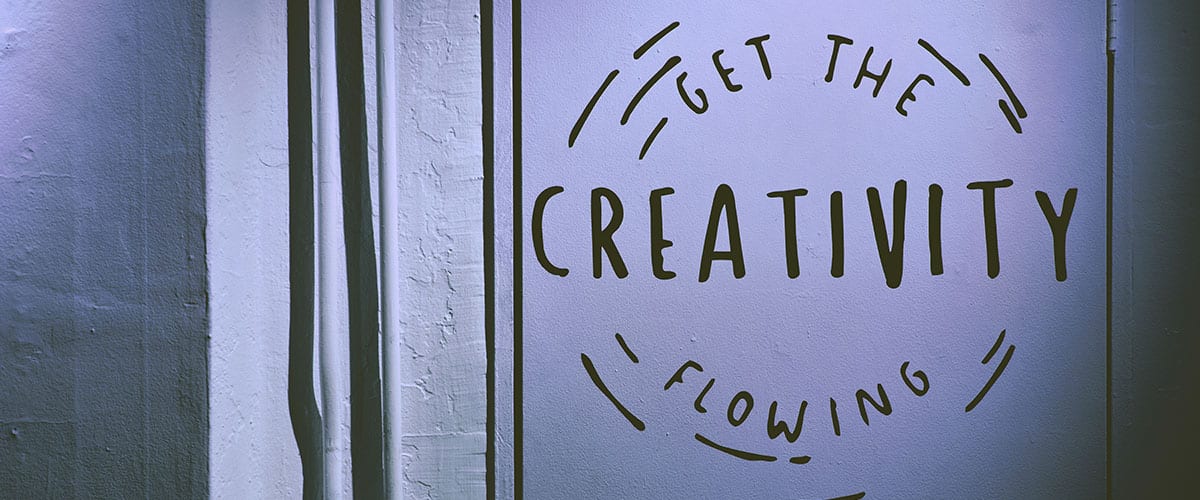

How to encourage staff to be more creative when remote working
Inspiring creative thinking at work is often a simple matter of leaving room for innovation. People come up with their best ideas spit-balling over a pot of coffee. Two heads are better than one, and bouncing ideas off your colleagues is the best way to pan for creative gold.
But it’s for this reason that creativity and remote working just don’t mix for some people. Figuring out how to improve creativity at work when your team is scattered across the country can be a real head-scratcher. But, with the right tools and techniques, you can enable your whole team to collaborate creatively.
How remote work impacts your team’s creativity
Remote work has numerous benefits, and it’s played a key role in keeping a lot of businesses afloat during the pandemic. But we’re not talking about a magic bullet solution. Remote work also comes with its own challenges, like social isolation and a blurring of the line between work and homelife.
Connected to the problem of social isolation is the impact remote work can have on our ability to think creatively, and work innovatively. Spending some time working remotely can help your staff get the peace and quiet to approach a project how they think best, but there are still negatives to a lack of contact with colleagues.
Even the most introverted employees are liable to miss their workplace social interactions when telecommuting makes up all of their hours. With modern tools, remote collaboration is definitely possible, but there’s less of an ability to have casual interaction. You can’t just chat to someone in the breakroom or employee kitchen. You’ve got to set up a video call, or the very least, send a message and wait for them to respond.
It’s a worn-out movie cliché that one character says something, and another asks them to repeat it because it just inspired an idea. But it’s true that some of the best ideas come from the conversations we least expect. So, even though you can definitely have a good virtual brainstorming session, there’s definitely creativity being lost in the absence of those casual conversations.
But just how creative your employees can be is a reflection of their level of autonomy, because you can’t innovate by following step-by-step instructions. In that sense, remote workers are uniquely positioned to think creatively and innovatively, despite obstacles to collaboration, due to their control over how they approach tasks.
The importance of creativity in the workplace (remote or otherwise)
The most important thing about creativity is that it’s essential for innovation. Those might come across like synonyms, but not quite. All innovation is creativity, but not all creativity results in innovation. What makes something innovative is that it provides a new or more effective way to achieve a result. Think streaming services versus broadcast media, or email versus sending physical letters. Non-innovative creativity might be a graphic designer taking inspiration from others artists to create new logos for the business.
Some jobs have more room for creativity than others. For example, someone developing a flashy visual marketing campaign will probably have more creative freedom than, say, a chef preparing dishes off a menu at a chain restaurant.
But even in jobs with more rigid expectations, you’re probably competing with others in your sector. Knowing how to improve creativity at work can give you the edge you need against competitors. Working remotely is generally associated with a certain level of personal autonomy. So, if you want to get the most out of your telecommuters, then remote work creativity should be encouraged.
The benefits of creativity in the workplace
Due to the fact that creativity is inherently about new ideas, it’s hard to exhaustively list all the possible benefits it could have for your business. But, broadly speaking, the benefits of creativity in the workplace include:
Higher engagement due to personal autonomy
As we’ve said, creativity stems from autonomy. Employees are typically more engaged when they have more control over their workflow, which means that a creative workplace is more likely to be an engaged one. Engagement relies on a combination of factors, especially job satisfaction and overall wellbeing. And researchers from the University of Birmingham conducted a study with 20,000 employees. They found that staff with higher autonomy reported increases in both of those things. We’ll be talking about how to improve creativity at work in the next section, so consider this a taster.
Greater productivity and efficiency
Of all the benefits of creativity in the workplace, this is probably the biggest. When you’re constantly trying out new ways of doing things, you quickly get a sense for what works, and what doesn’t. There’s a reason people say it’s better to work smart than work hard.
Enabling creativity helps distinguish your brand
One of the main reasons you’d want to know how to improve remote work creativity is to stand out from your competitors. Enabling creativity doesn’t just make life better and more rewarding for your employees. It can massively improve and distinguish your customer experience as well.
You can reach new markets by innovating
If you’re already successfully targeting a large demographic, then you might think it’s going to be nothing but smooth sailing. But businesses are becoming more diverse, which means people with different experiences and mindsets are collaborating like never before. Using teamwork in a diverse workforce helps you to appeal to new markets and demographics that were previously ignored.
A more fun workplace
Obviously fun isn’t the most important metric to keep track of. But morale is certainly up there, and morale definitely benefits from an enjoyable work environment. Workplace cultures with an emphasis on creativity fit right in here. Take Google and Facebook, for example. Their tech development hackathons have been incredibly popular with employees as a chance for people to experiment with their best ideas and see what sticks.
How to improve creativity at work for your remote staff
So, now that you have a good idea of how vital creativity is in the workplace, and how it’s affected by working remotely, it’s time to actually go over how to improve creativity at work for your remote teams:
Nix the productivity tracking software
As we’ve said, creativity and autonomy are heavily linked, which is great for remote workers. Unfortunately, some businesses have taken to using tracking software to monitor computer usage as way to measure productivity. Firstly, that productivity metric is shaky at best. Secondly, it proves to your employees that you don’t trust them. And, thirdly, it suppresses creativity, as you won’t take the time to experiment if you’re going to be penalised for it.
Use the right virtual collaboration tools
There’s nothing quite like a face-to-face chat. But modern technology comes pretty close. And it's just a simple fact that collaboration makes it easier to find creative solutions. There's nothing like being able to bounce thoughts off each other and turn good ideas into great ones. So, if remote work creativity is what you're after, then your people need to be able to work together.
There are plenty of remote work tools that are amazing for collaboration. Video conferencing tools like Teams or Zoom let you chat for as long as you like, but that’s just the start. Organisational tools like Trello or Asana, or even messaging tools such as Slack can be great for sharing and developing ideas. There are even virtual whiteboard tools available, in case you can’t put your idea into words!
Make time for social interaction
It’s easy to underestimate the value of a bit of small-talk or banter. But, in the absence of a centralised workplace, it’s more important than ever. The stronger the social bonds between your team members, the more likely they are to stay in communication between stand-ups, and the more likely they are to seek each other’s opinions or advice. You can even go one step further and run some fun activities to break the ice.
So ultimately, while there are some obstacles to collaboration for remote workers, managing to overcome them can make remote staff some of your most creatively insightful employees. Creativity is all about experimentation and risk-taking. So, if you want remote workers to innovate, you have to trust that they can be left to it.




